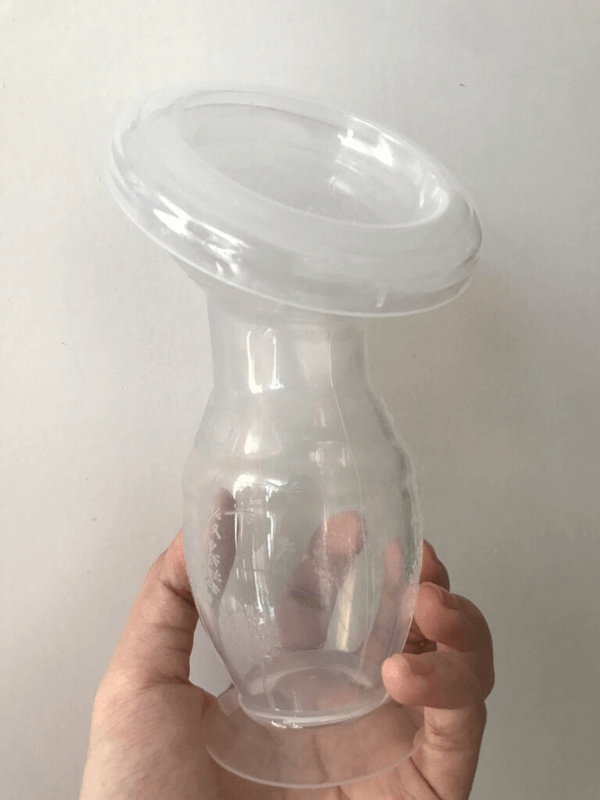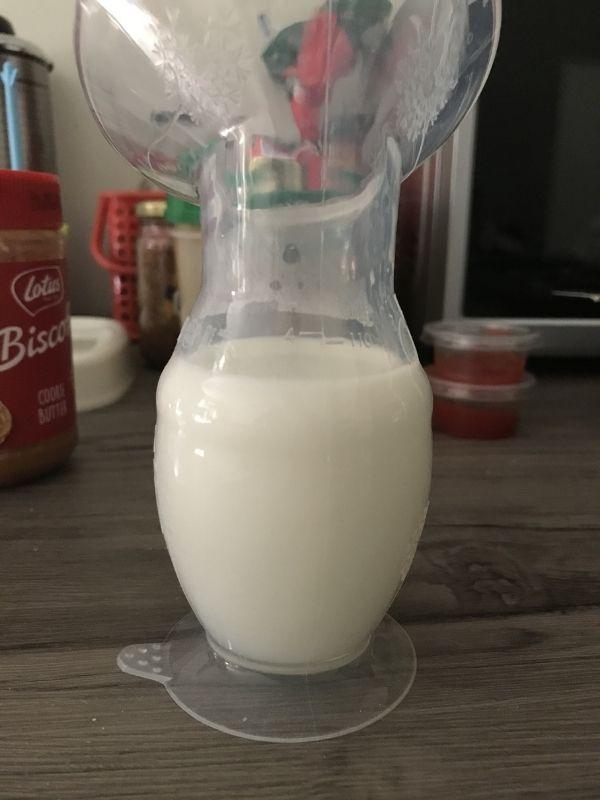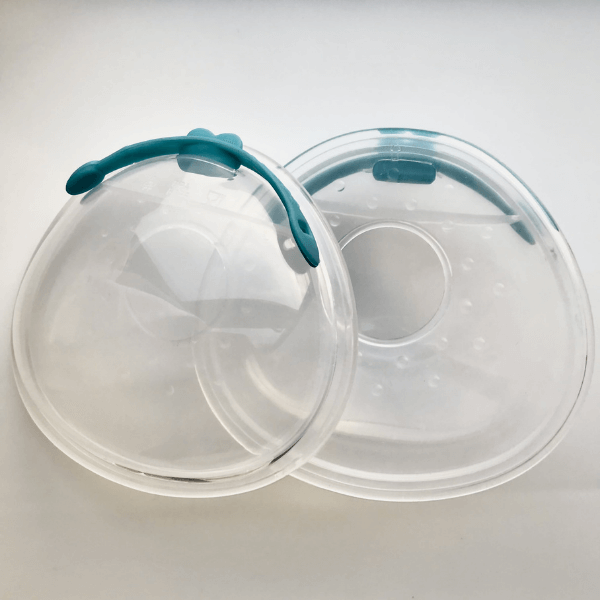Letdown Catcher: My Top Breastfeeding Item
Breast milk is liquid gold and so every drop matters. Make sure to not waste it by using a letdown catcher while breastfeeding.

What is a silicone letdown catcher?
A silicone letdown catcher goes by a lot of names: Letdown catcher, milk catcher, hand pump, silicone breast pump, breast milk collector, milk saver collector, and maybe other names I’m not aware of.
It is a handy tool that saves your letdown milk from one breast while your baby feeds on the other. This is helpful especially when you plan to exclusively breastfeed. The brand I’m using is Dula.
Why have a letdown catcher?
Check the description when you’re about to buy yours. Most letdown catchers are:
Some letdown catchers come with a lid, suction base, milk storage bag, and sterilizer bags.

How to use a silicone letdown catcher?
While breastfeeding your baby, simply attach the milk catcher to the other breast. You can do this by squeezing on the silicone body, centering it around your nipple and areola, and then releasing the container to apply suction. You can also flip back the circular flap and attach it to your boob. The gentle suction power will help draw milk from the breasts.
To remove the catcher from your breast, peel the flap with one clean finger so air can get in and the tool will come loose. Try not to fill the catcher to the brim because it would fall off when the flap gets wet.
How is it different from a manual breast pump?
Some brands also call their letdown catchers a manual pump. But to see the difference here’s what a standard manual breast pump looks like.

Although both work without electricity, a manual pump is hand-operated. You have to use your hand to “pump” the lever to create suction and collect milk. It might be quiet but it is not hands-free.
A silicone letdown catcher works just by using its natural suction power to draw out milk. Squeeze and attach to your boob and it should do its work, although you can massage your breast to help with the letdown.
When can you start using a letdown catcher?
You can use it several hours or a day after you delivered your baby. Just don’t expect to collect a huge amount of milk right away.
At the hospital where I gave birth, I brought my letdown catcher as I was eager to save colostrum. I gave birth on a Friday night and by Sunday morning, a nurse gave me a lactation massage. After that, I used the milk catcher for the first time while breastfeeding. I was thrilled to collect almost 10 ml.
Pro tip: This one I got from the lactation nurse. Use only milk catchers and not an electric breast pump during the first few weeks postpartum. The reason is that only a few milk ducts are working in the early weeks and we don’t want to force open the other ducts. So if you are not in a hurry and your milk supply is fine, hold off on pumping.
Why use a letdown catcher?
For most mothers, nursing your baby also stimulates your other breast to release milk. Instead of using breast pads to avoid drenched clothes and wasted milk, utilize a letdown catcher.
Having this milk catcher is a smart choice when:
- You want to build an extra stash for when you’re away from your baby
- Your hubby or another person also wants to take bottle-feeding duty
- You want to relieve your breast from being (sometimes uncomfortably) full
What position will it not work for and what’s the alternative?
There are lots of breastfeeding positions you can do and choosing yours is based mostly on what’s easy for you and your baby. However, it is difficult to use the standard silicone letdown catcher if you are breastfeeding in a side-lying position. It won’t work also on moms who are nursing while lying flat on their backs (laid-back for c-section).
If you still want to collect your letdown, thankfully, there are breast shells.

What are breast shells?
Technically, breast shells are also letdown catchers. They are also called milk collection shells and nursing cups (it’s a lot, I know 🤷🏻♀️). It’s just that it looks different and has other functions.
Breast shells commonly consist of 2-3 silicone parts that are worn over the breast to save excess milk.
Aside from collecting dripping breast milk, here is what these breast shells can do:
When outside the house, these breast shells are more convenient to wear than the standard milk catcher. Insert these silicone savers inside your bra and align nipples at the center of the silicone pad. If done right, milk will flow and stay in the shell until you transfer it to a milk storage bag or bottle. You have to be careful though because when you bend the wrong way while wearing these breast shells, your milk will spill on you.
Until when can you use a milk catcher?
My son is 1 year old and 3 months and I’m still using my letdown catcher — although not while my baby breastfeeds. By the time my boy was 6 months, he couldn’t stay still in my arms while nursing. He liked to kick my letdown catcher so I had to ditch it.
Also, milk supply starts to drop as your little ones begin eating solid food. Breasts would eventually stop being leaky and you can breastfeed without soaking your clothes.
What I do: When I want to collect milk, I apply a generous amount of nipple balm (I use MQT) and proceed to use the letdown catcher. Depending on how full the boob is, sometimes I get 1-2 oz of breast milk.




